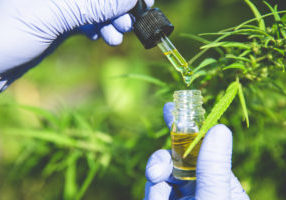WHAT IS A PLANT PATENT?
The U.S. Patent Office grants three types of patents: utility patents, design patents, and plant patents—the subject matter discussed on this page. A plant patent protects asexually reproduced plants, other tuber or a plant found in an uncultivated state. Notably, filing an application for a plant patent does not preclude the applicant from also seeking a utility patent covering the plant, a seed, or part of the plant, or from seeking a certificate from the Plant Variety Protection Office for the plant.


A plant patent is granted by the Patent Office to an inventor who has invented or discovered and asexually reproduced a distinct and new variety of plant, other than a tuber propagated plant or a plant found in an uncultivated state. To date, the Patent Office has granted over 29,000 plant patents.
Asexual reproduction occurs by the rooting of cuttings, by layering, budding, grafting, inarching, etc., and produces an offspring with a genetic combination identical to that of the single parent. By contrast, sexual reproduction occurs by seed and sometimes involves two different plants. Plants that are capable of sexual reproduction are not necessarily excluded from consideration if they have also been asexually reproduced.
WHAT PROTECTIONS COME WITH A PLANT PATENT?
A plant patent protects the patent owner’s right to exclude others from:
- Asexually reproducing the plant
- Using, offering for sale, or selling the plant so reproduced, or any of its parts, throughout the United States
- Importing the plant so reproduced, or any part thereof, into the United States.
This protection is limited to a plant in its ordinary meaning: a living plant organism which expresses a set of characteristics determined by its single, genetic makeup or genotype, which can be duplicated through asexual reproduction, but cannot otherwise be “made” or “manufactured.”
The IP rights accorded by plant patent last for 20 years starting from the “earliest effective filing date” of the application. The earliest effective filing date can be the filing date of the non-provisional patent application resulting in the patent grant, a provisional patent application utilized for the plant inventions, or an application for plant breeder’s rights filed in a member country of the World Trade Organization or filed with one of the 77 members of the International Convention for the Protection of New Varieties of Plants (UPOV).


WHAT KIND OF PLANTS QUALIFY FOR A PLANT PATENT?
Cultivated sports, mutants, hybrids, or transformed plants, where sports or mutants may be spontaneous or induced, and hybrids may be natural, from a planned breeding program, or somatic in source. While natural plant mutants might have naturally occurred, they must have been discovered in a cultivated area.
In this context, algae and macro-fungi are regarded as plants; however, bacteria are not.
PLANT PATENTS VERSUS UTILITY PATENTS
Separate from plant patents, the Patent Office grants utility patents related to plants for genes, traits, methods, plant parts, or varieties. To date, the Patent Office has granted over 21,500 of such utility patents. In that data set, there are a plethora of utility patents for varieties of soybean, corn, cotton, lettuce, tomato, and cucumber, to name a few.
Applicants should be aware of a couple of key differences between the requirements for a utility patent and those for a plant patent. A utility patent is filed under 35 U.S.C. § 101 and must fulfill the statutory enablement and written description requirements of 35 U.S.C. § 112. To this end, the Patent Office requires a deposit of 625 seeds with an acceptable depository. By contrast, patent application submitted under the Plant Patent Act (35 USC §§ 161–164) do not require a similar deposit of seeds—even where a deposit of a plant has been made in conjunction with a utility patent application. Further, an application for plant patent shall only contain a single claim, which must be formatted in a formal manner, whereas an application for a utility patent can have 20 claims for the basic filing fees and any number of claims for an additional fee.
PLANT PATENTS VERSUS PLANT VARIETY PROTECTION CERTIFICATES
The Plant Variety Protection Office (PVPO) is the agency within the U.S. Department of Agriculture’s (USDA) Agricultural Marketing Service (AMS) tasked with providing protection in the form of Plant Variety Protection Certificates to breeders of new varieties of sexually reproduced, tuber propagated, and asexually reproduced plant varieties. New varieties can increase crop yield, increase farmer revenue, expand trade, and result in economic growth. The PVP Certificates protect varieties for 20 years.
The PVPO recommends—prior to applying for a certificate—that Applicants carry out distinctiveness trials and choose a unique name for the new variety they have bred. The Plant Protection Variety Act is the governing law. To obtain a certificate, the PPVA laws requires the variety to be:
- New, which means it has not been sold commercially or it was sold in the US for less than a year or it was sold less than 4 years internationally
- Distinct, which means the variety is distinguishable from all other publicly known varieties
- Uniform, which means any variations are describable, predictable, and commercially acceptable
- Stable, which means the variety will remain unchanged from the described characteristics when reproduced.
The PVPO receives about 450 applications per year and grants about 400 certificates annually. Typically, the application process takes about 18 months from application filing to issuance. The top crops include corn, cotton, soybean, potato, pea, barley, lettuce, field beans, and rice.
